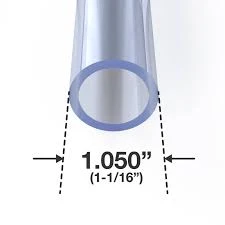Nov . 21, 2024 15:12 Back to list
plumbing pipes and fittings
Understanding Plumbing Pipes and Fittings A Comprehensive Guide
Plumbing is an essential aspect of any building, whether it be a residential home, a commercial space, or an industrial facility. At the heart of any plumbing system are the pipes and fittings that transport water, wastewater, and other fluids throughout the structure. Understanding the types, materials, and applications of plumbing pipes and fittings is crucial for anyone involved in the construction, renovation, or maintenance of plumbing systems.
Types of Plumbing Pipes
There are several types of pipes commonly used in plumbing systems, each serving specific purposes based on their properties and applications.
1. PVC Pipes (Polyvinyl Chloride) PVC pipes are lightweight, durable, and resistant to corrosion. They are commonly used for both cold and hot water systems, as well as for drainage, waste, and venting. Due to their ease of installation and low cost, they are a popular choice for residential plumbing.
2. CPVC Pipes (Chlorinated Polyvinyl Chloride) Similar to PVC, CPVC can withstand higher temperatures and is suitable for hot water lines. Its ability to resist corrosion and chemical damage makes it an ideal choice for hot water distribution and specific industrial applications.
3. PEX Pipes (Cross-Linked Polyethylene) PEX is a flexible tubing used for both hot and cold water supply lines. Its flexibility makes installation easier, especially in tight spaces. PEX is resistant to scale and chlorine, reducing the likelihood of corrosion and buildup in the pipes.
4. Copper Pipes Copper has been a traditional choice for plumbing due to its durability and reliability. It is commonly used for water supply lines and can handle both hot and cold applications. Copper pipes are resistant to bacteria, making them a hygienic option, although they can be more expensive than plastic alternatives.
5. Galvanized Steel Pipes Although becoming less common in modern plumbing, galvanized steel pipes were widely used in the past. They are coated with zinc to prevent rust but can corrode over time, leading to leaks and reduced water flow. Current plumbing codes often discourage their use in favor of more modern materials.
Types of Fittings
Fittings are critical components that connect pipes, allowing them to change direction, branch out, or connect to various fixtures. The following are some common types of plumbing fittings
1. Elbows Elbow fittings allow pipes to change direction, typically at a 90-degree or 45-degree angle. This is essential for navigating around corners and obstructions.
plumbing pipes and fittings

2. Tees T-shaped fittings are used to join three pipes together. This configuration allows for branch lines to take off from a main line, facilitating water distribution.
3. Couplings Couplings are used to connect two straight sections of pipe. They can be either slip couplings (which slide over the pipe) or threaded couplings (which require threaded ends on the pipes).
4. Unions Similar to couplings, unions are used to connect two pipes but allow for easy disconnection. This is particularly useful in situations where maintenance or replacement is necessary.
5. Adapters Adapters are fittings that allow for the connection of dissimilar pipe materials. For example, an adapter may connect a PVC pipe to a copper pipe.
Choosing the Right Pipes and Fittings
When selecting plumbing pipes and fittings, several factors should be considered
1. Application The intended use of the plumbing system will dictate the types of materials needed. For example, hot water lines require materials such as CPVC or copper, while drainage systems can utilize PVC.
2. Environment Consider the environmental conditions that the plumbing will be exposed to. For instance, pipes in colder climates may require insulation or specific materials to prevent freezing.
3. Building Codes Always adhere to local plumbing codes and regulations, which may specify certain materials or installation methods to ensure safety and compliance.
4. Budget While it might be tempting to choose the least expensive options, consider the long-term costs associated with installation, maintenance, and potential replacement.
Conclusion
Understanding plumbing pipes and fittings is fundamental for anyone involved in building or maintaining plumbing systems. By selecting the right materials and components, one can ensure a reliable and efficient plumbing system that will stand the test of time. Proper knowledge not only aids in effective installation but also contributes to the overall longevity and functionality of plumbing in any structure.
-
High-Quality PPR Pipes and Fittings Durable ERA PPR & PVC PPR Solutions
NewsJul.08,2025
-
Black HDPE Cutting Board - Durable, Non-Porous & Food Safe HDPE Plastic Cutting Board
NewsJul.08,2025
-
High-Quality CPVC Panel Durable HDPE & PVC Panels Supplier
NewsJul.08,2025
-
Double PE Welding Rod Supplier - High Strength, Durable & Versatile Welding Solutions
NewsJul.07,2025
-
High-Quality PVC-O Pipe Supplier Durable 75mm PVC Pipe & Connections Leading PVC Pipe Company
NewsJul.07,2025
-
HDPE Drainage Pipe Supplier – Durable & Corrosion-Resistant Solutions
NewsJul.06,2025

